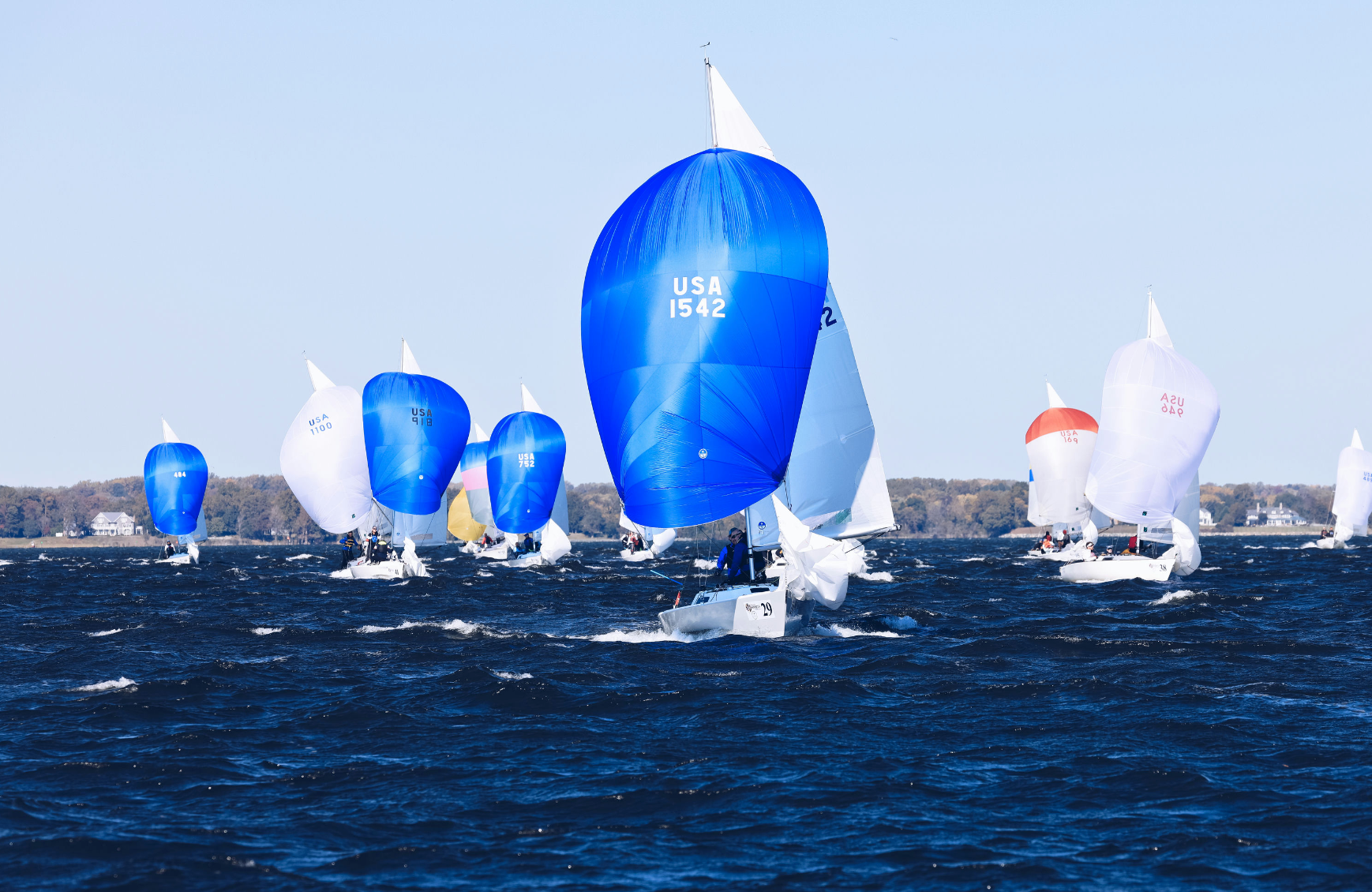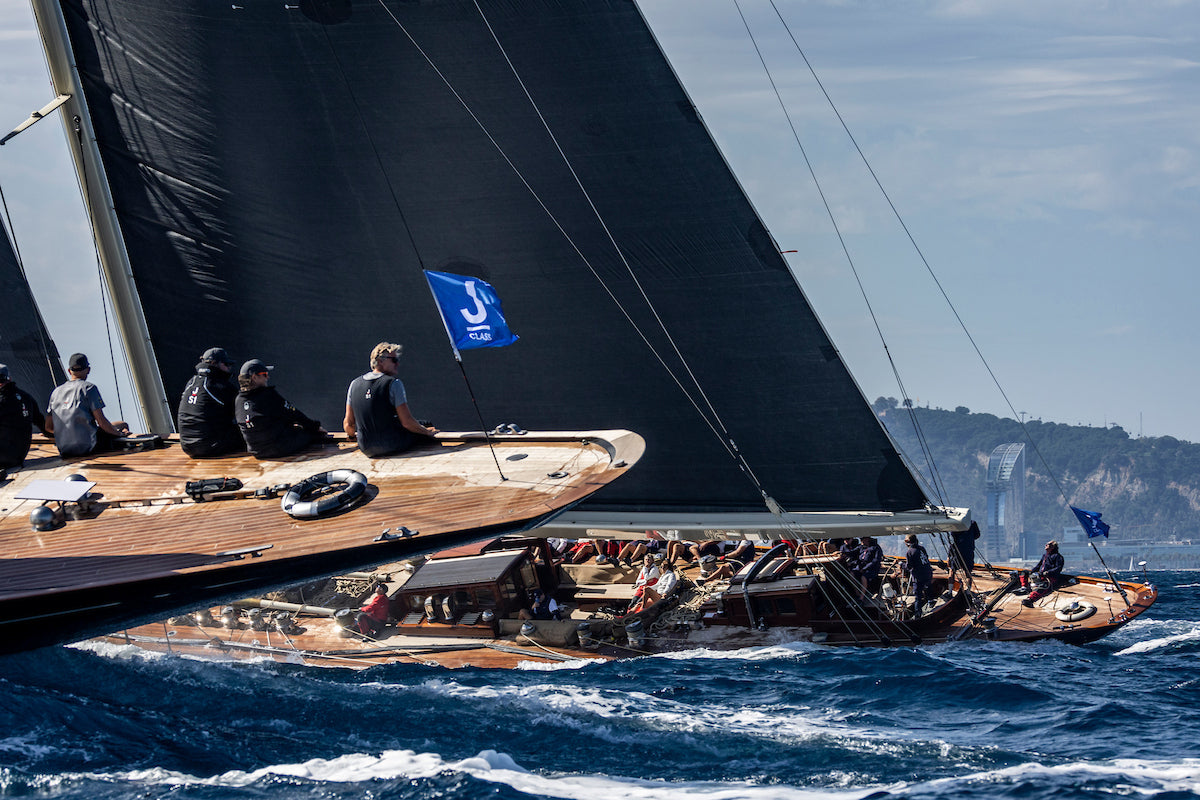VIPER 640 WORLDS: INTERVIEW NICK JERWOOD
INTERVIEW WITH 2018 VIPER 640 WORLD CHAMPION NICK JERWOOD
Top Ten Teams Powered by North Sails

North Sails is proud of all clients for their dominant performance at the Schweppes Viper 640 World Championship in Perth. All top ten boats at the Worlds were powered by North. Our own Viper expert, Zeke Horowitz, had the pleasure of catching up with new World champion Nick Jerwood to pick his brain on the key factors that led to his team’s success. Please enjoy the interview with the Champ below!
Tell us a little bit about your team and what it’s like to sail as a family at such a high level. How long have you guys been sailing together and how much Viper experience do you have as a team?
Brian is the father of my daughter’s crew in the 470 Class and he asked me back in September 17 whether I would be able to sail the Viper with him, potentially on up to and including the Worlds. I jumped at the chance never having sailed with Brian before but knowing full well what a really top bloke he is, it was an easy decision! The choice of middleman was the next piece of the puzzle that we had to solve, the answer came to us fairly quickly after Matt (my son and helm of the World Match Racing Tour team “Redline Racing”) confirmed he would be able to sail the Worlds with us. To sail with Matt was quite an honor, I haven’t had the pleasure of sailing with him in a regatta for many years, so to see first hand how much he has matured as a sailor and to benefit from the professional approach that he brought to the team was a real learning experience for both Brian and I. Brian had sailed Vipers to a limited degree prior to September 17 but my exposure to the class had been ZERO. Matt had very little prior experience of the Viper but thankfully he had good experience of asymmetric classes, 49er, M32, GC32 etc. which proved invaluable. My sailing experience has almost entirely been on symmetrical spinnaker classes so early on in our campaign I was quite lost on the downwind legs, initially always sailing way too low and then too high, downwind sailing was definitely the aspect of Viper sailing that took the longest to get to grips with.
What was your practice/training schedule like as you prepared for the Worlds?
Matt couldn’t sail regularly with Brian and I due to his other sailing and coaching commitments for most of the run-up to the event, but this didn’t stop Brian and I sailing at every opportunity we had. During 2017 training opportunities were quite rare for us due to work commitments but my time freed up in early January 18 at which time Brian and I ramped up the effort to get out on the water three to four times a week with various experienced crews who helped us learn a lot about the boat. Matt trained with us whenever he could but this was limited to maybe six or seven- sessions until the week before the event when he returned to Perth from Sailing a GC32 in Melbourne and we were able to get out on the water for some solid practice sessions most of that week. Little did we know the conditions during the worlds were going to be totally different to those we had been practicing in.
How did you approach the tuning to make sure you were going really fast in all conditions? What were the three things on your “tuning checklist” you double checked before starting each race?
We knew we had very little time to experiment with the boat’s setup prior to the event, choosing instead to set the boat up to replicate the North Tuning Guide as closely as we could, hoping that this would be a quick easy way of dialing up boat speed. The hope being that this approach would enable us to spend more of our time concentrating on boat handling and starting rather than setup.
We gained confidence quite early on from the feel of the boat, the response of the rig and look of the sails that the North Sails tuning guide had set us on the right track to be as fast as any boat out there, so we were able to save many hours of tuning up time just by following the straightforward North guide.
One of my sailing tenants is to make sure you have the basics covered, build on a strong footing so to speak. So before each race, we would make sure the basics were in place as far as rig setup was concerned then the three most important considerations for us would be, Cap shroud setting, chocks and luff tension. All three of which tended to be set to the conditions while most other adjustments were more, set and forget.
You ended up winning the Championship by a pretty large margin. How did your strategy and approach to each race change as you could start tasting the Championship near the end of the event?
We were very conscious of the quality of competitors in the fleet, we have a huge respect for their abilities so were at no point confident that the win was ours until it was in the bag. We had a UFD on the first day so could not push the starts at any point, this coupled with the random light gusty conditions that prevailed, and the close proximity of the shore to the top of the course meant that the potential for a deep finishing position was always present and that would put a huge dent in our regatta prospects. The last day was particularly difficult, we were determined to get the job done (win the event) during the first race of the day but after going for what appeared to be a certain pin bias start the wind started playing tricks and we quickly found ourselves in the middle of the fleet bouncing around the 13th position that we needed to achieve the win. We had talked together during the event about how we needed to trust each other’s abilities and that, as long as we did our best and sailed to keep the odds in our favor then things would turn out for the best. We did just that, didn’t panic, just stayed close to our nearest opposition sailing as fast and free as we could in the conditions. It paid off, and to our great relief we won the event with a race to spare. To go on to win the last race was the icing!
What is your favorite thing about racing the Viper?
Without doubt, sailing downwind in 20 knots, or even 25 knots and above on a good day when we get blessed with a good seabreeze. It’s what we live for. A close second is the mateship and friends you get from participating in such a tight fleet, really lovely people following their passion for the sport. Can’t think of a better way to spend leisure time.
What are three tips you would give a first-time Viper sailor to help them have success in their racing?
Keep it simple and make sure you have the basics covered before worrying about the 1%. The standard boats are excellent, while the off-the-shelf sails from North set up beautifully to their guide to give a fast responsive package. Just concentrate on pointing the boat in the right direction and you will have everything you need to make the boat competitive. Don’t put up with anything that doesn’t work properly, the equipment needs to be the best quality and in good working order so that you can enjoy sailing and get the most out of the experience.
What’s next for team Jerwood?
That is quite a funny question for us, but not in the way you may first think. As mentioned earlier, my daughter Nia sails with Brian’s Daughter Monique in the 470 class and they set-up a facebook page called “Nia Jerwood / Monique deVries – AUS 470 Sailing Team“. So, as a result, the AUS Viper sailing team from the same families has been named in jest by the girls as “Jerwood and de Vries Sailing Team B” 🙂 But in all seriousness, we will continue on sailing Vipers, Flying 15s and various other classes just having fun for the foreseeable future. Always with an eye on ramping up again for the next Viper Worlds at some point..! Can’t wait.
North clients finished 1,2,3,4,5,6,7,8*,9,10 in Perth.
Learn more about North’s fast Viper sails.





























